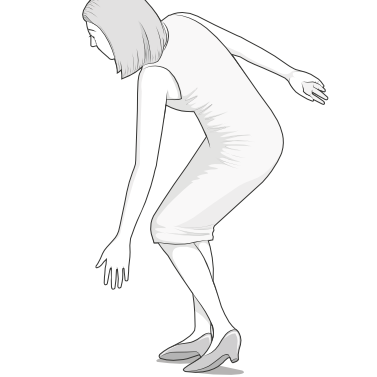Cruciate instability is a feeling of abnormal movement in the knee joint consequent on damage to one or both cruciate ligaments.
 Page updated October 2023 by Dr Sheila Strover (Clinical Editor)
Page updated October 2023 by Dr Sheila Strover (Clinical Editor)

Is cruciate instability often associated with meniscus tears?
There is a strong association between cruciate ligament tears and meniscal tears, but it is not always easy to know if they occurred in the same injury or whether instability of the one led to damage of the other. It is a challenge for the surgeon to decide on surgery for the cruciate problem, as a delay may lead to the meniscus damage.
Is the timing of cruciate reconstruction important?
The timing between cruciate injury and cruciate ligament reconstruction is still a hot topic. In the 1980's it was common to do an early reconstruction, but it was found that unsettled inflammation in the knee frequently led to stiffness from arthrofibrosis.
Practice, therefore, changed to allow a period of rehabilitation before any reconstructive surgery, and this also allowed an assessment of the degree of stability the patient had despite the cruciate injury.
Does chronic cruciate instability always lead to osteoarthritis?
There is a relationship between the frequency of instability episodes and the development of eventual osteoarthritis in the knee, but the statistical correlation is not a straight line. So not everyone who has frequent instability episodes will end up with arthritis, but it is certainly more likely.
Quick links
Forum discussions
- Recent Injury - Help me - I need some peace of mind
A patient's knee feels unstable after an injury.
- Meniscal tear and a weak/deficient ACL.
A patient explains how instability of the meniscus and ACL can be related, and the difficulties of deciding on reconstructive surgery.
Peer-reviewed papers
-
Quote:
"Information regarding the number of instability episodes should be obtained early in the history of patients with ACL injury, as this may influence the likelihood of having medial meniscal damage. Educating the patient regarding the importance of avoiding subsequent instability episodes becomes an essential part of any treatment algorithm."
"...lateral meniscal damage...(is) more common in an acute ACL injury and medial meniscal damage...(is) more common in a chronic ACL injury...(and) recurrent instability after first-time ACL injury is associated with increased odds of medial meniscal lesions."Citation: Sommerfeldt M, Raheem A, Whittaker J, Hui C, Otto D. Recurrent Instability Episodes and Meniscal or Cartilage Damage After Anterior Cruciate Ligament Injury: A Systematic Review. Orthop J Sports Med. 2018 Jul 24;6(7):2325967118786507. doi: 10.1177/2325967118786507. PMID: 30057927; PMCID: PMC6058426.
More cruciate info -
Primer -
- Primer - 2019 - Cruciate Ligaments - by Dr Sheila Strover (Clinical Editor)
 2017 -
2017 -  2017 -
2017 -  2008 -
2008 -